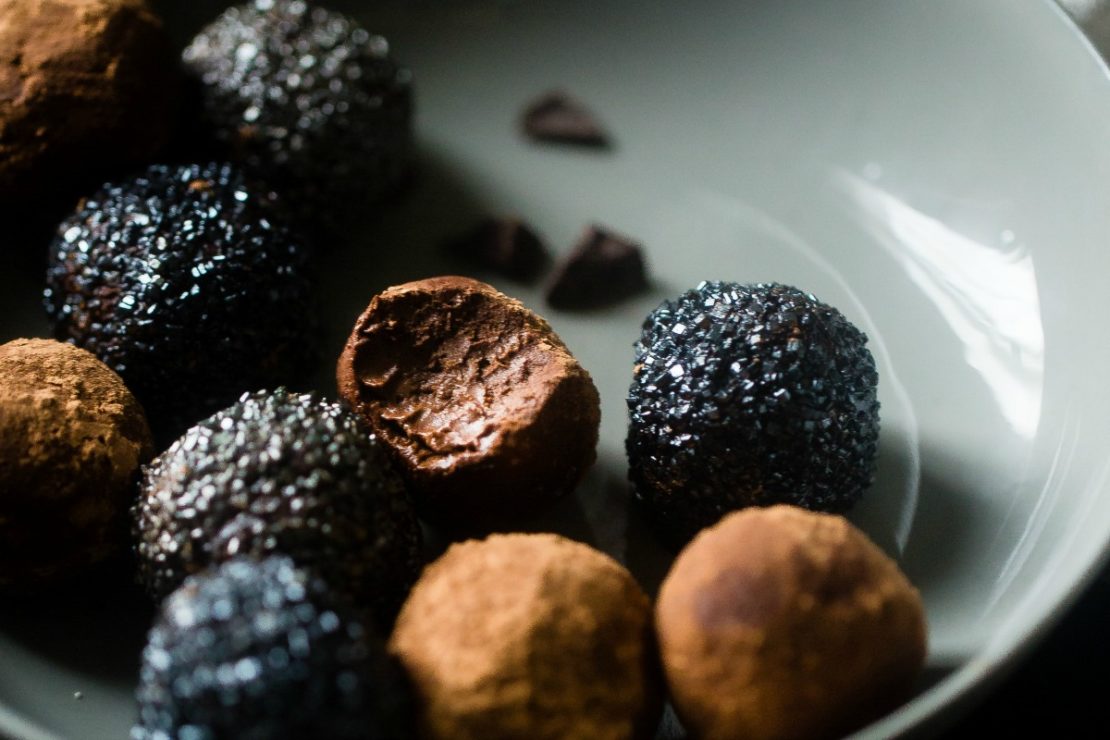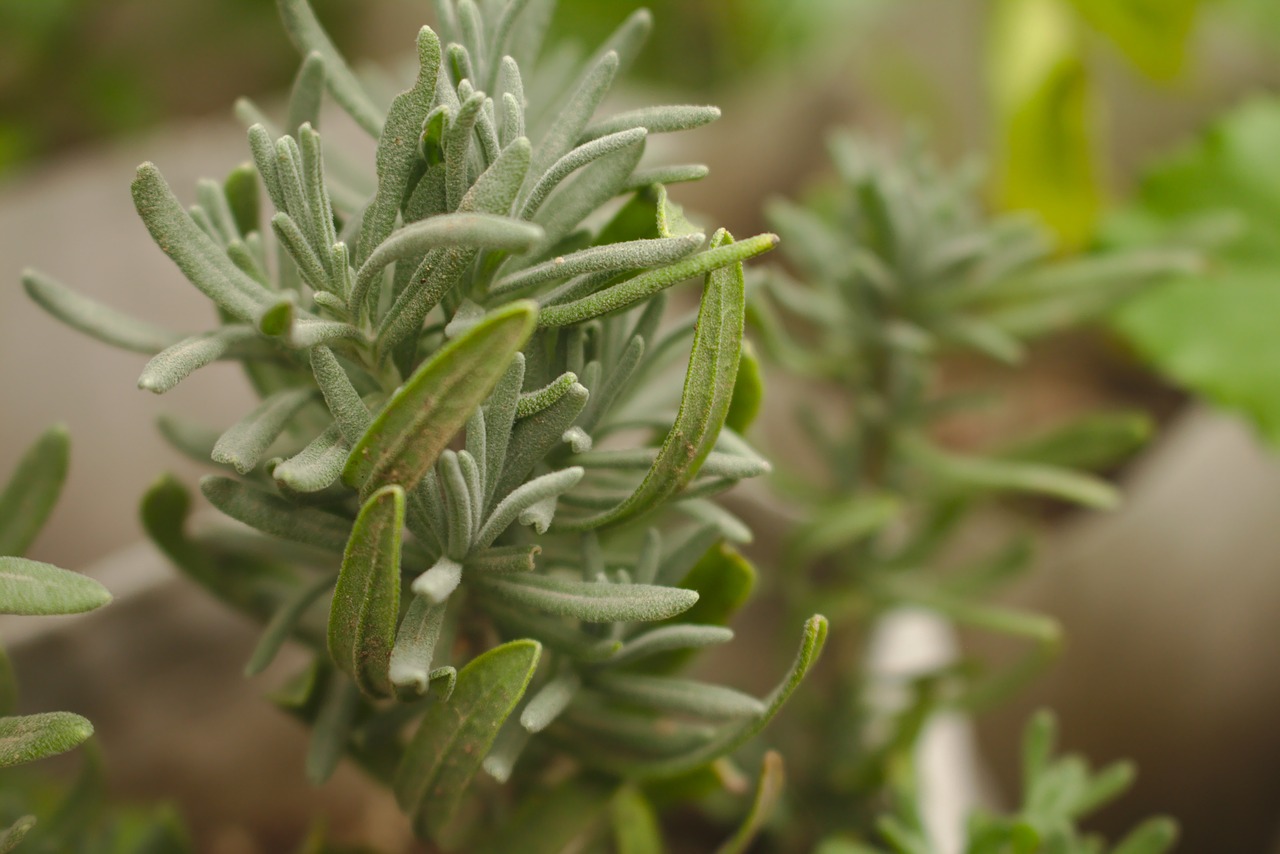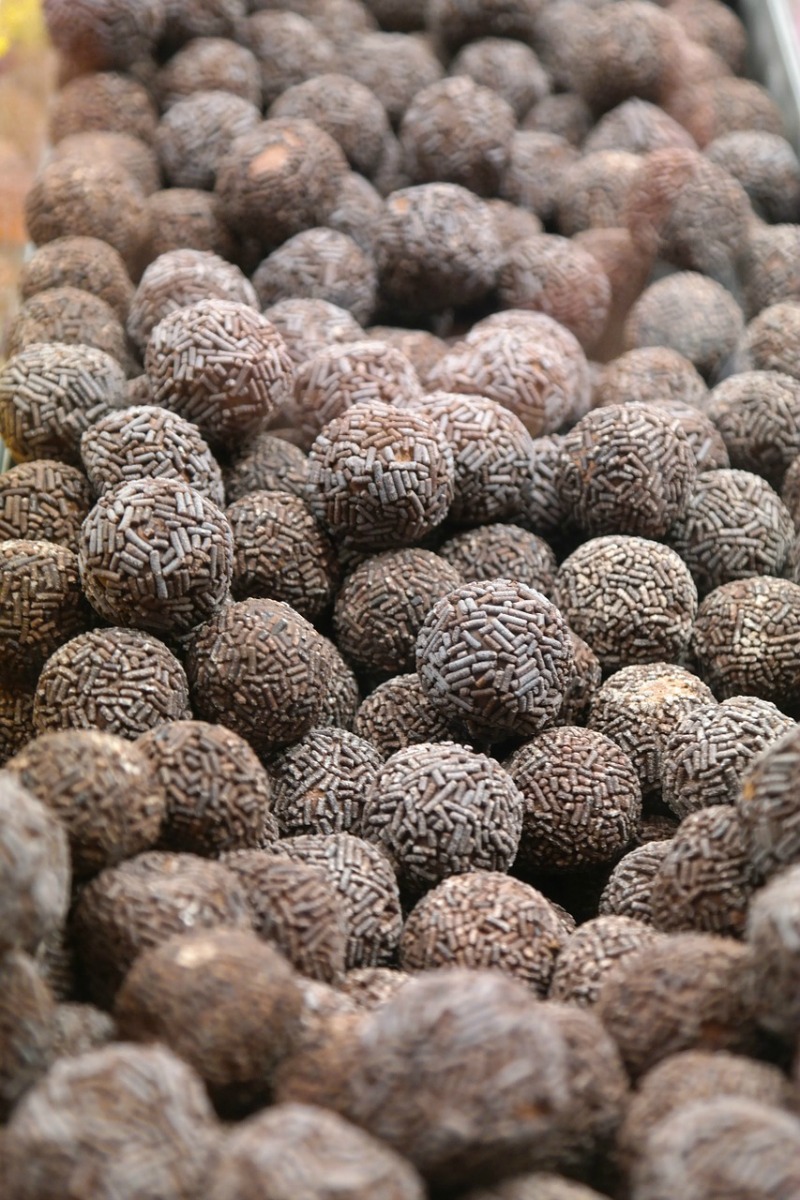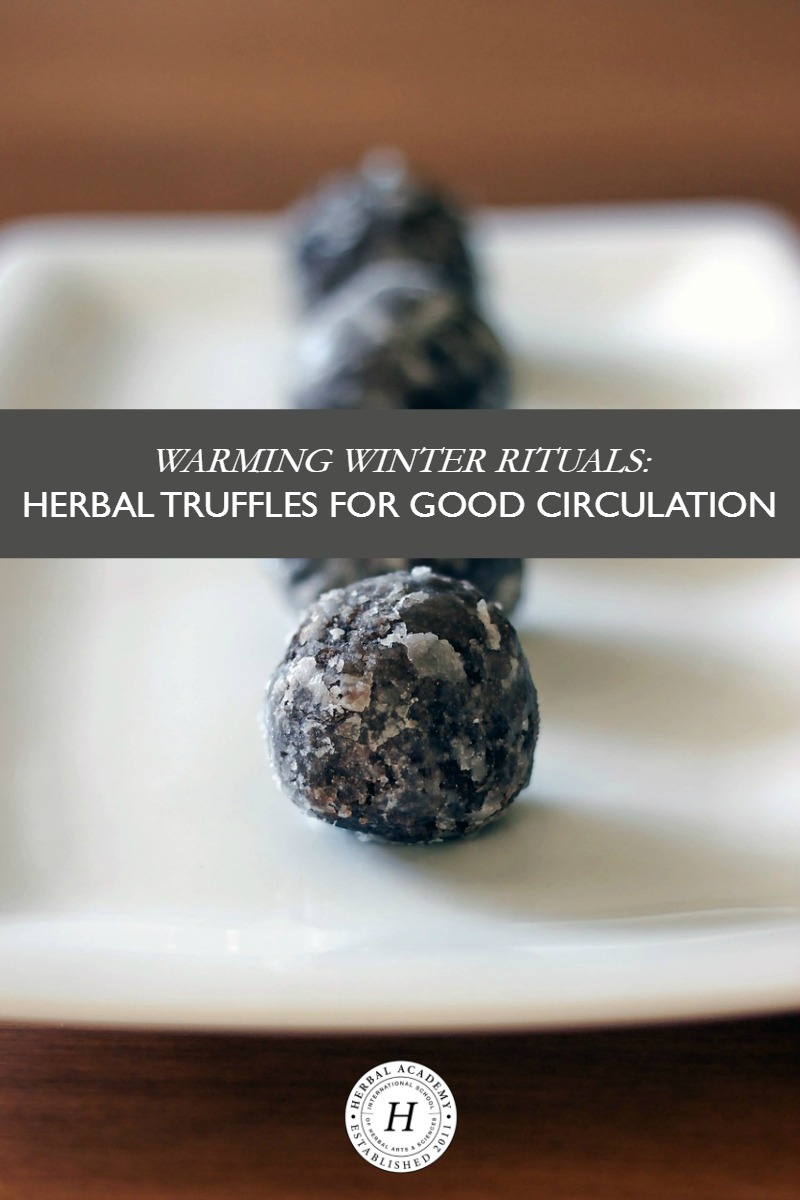
Warming Winter Rituals: Herbal Truffles for Good Circulation
One of the charms of integrating herbs into your daily routine is the possibility for pleasure. The smell, textures, and flavors are important and integrated aspects of an herbal approach to balanced health. What’s more, “compliance” with taking one’s herbs becomes all the more likely when in the form and taste of a pleasing ritual.
With cold winds and snow days looming, I like to add herbal truffles to my morning putterings. The size of a quarter and packed lovingly with aromatic herbs, rich flavors, and quality fats, the herbal ball is an efficient and happy carrier for any number of botanical agents.
One of my favorite versions of herbal truffles is concocted to address winter’s toll on poor circulation and cold extremities. It’s like eating a warm and spicy morning treat—like a sweet coal in the belly, a small inner fire that accompanies you through your morning to-do list.
The Basics of Herbal Truffles
The beauty of herbal truffles is that they can be wildly varied in flavor, herbal effect, and ingredients, so long as the herbalist follows a few basic guidelines.
These truffle-like creatures consist of a solid-at-room-temperature fat, such as coconut oil, ghee, butter, cocoa butter, or perhaps even well-rendered lard. Powdered herbs are then added into this medium, (often including with my favorite constituent, cocoa powder!) until the fat is thickened. Finally, a sticky sweetener is added to bind it all—I like to use honey or maple syrup. Getting the consistency just right can be difficult—if I am not following an exact recipe, I will often add my powders a little bit at a time and fold it all together slowly. Once the mixture is firm and pliable enough to form small quarter-sized balls, they can then be rolled in a layer of cocoa powder, shredded coconut, or another ingredient that coats the outside of the “truffle.”
Since herbal truffles are a great way to take tonic herbs consistently over a period of time, many herbalists recommend taking adaptogens in this manner, such as ashwagandha (Withania somnifera), eleuthero (Eleutherococcus senticosus), or shatavari (Asparagus racemosus).
For those of us wishing for greater finger and toe function while out in the cold and snow fixing the maple tap lines, the following herbs can be employed singly or in combination for small daily amounts of warm zing.

Warm + Spicy Herbal Materia Medica
Damiana (Turnera aphrodisiaca, Turnera diffusa)
This little yellow-flowered desert plant has become somewhat infamous for its aphrodisiac effects, which stem mostly from the way it causes stimulation of the circulatory system, with particular affinity for the pelvic bowl. This affinity makes it a great addition to herbal formulas meant to balance the ovo-uterine system, such as regulating the menstrual cycle and addressing pelvic congestion. Damiana is also carminative, helping to settle upset and bloated digestion. I love damiana most of all, though, for its earthy aromatic aroma and flavor, which offer a complex perfume and zing to hot chocolate, desserts, and, of course, the humble herbal ball.
Ginger (Zingiber officinale)
The sturdy brown rhizome of ginger is common to myriad culinary and medicine traditions around the world, appearing in recipes from curries and pickles to cocktails, fire ciders, and immune syrups. One fascinating aspect of many herbal foods is the difference in their actions and energetics once they’ve been processed. Fresh ginger (warming and watery), for example, is used to reduce fevers, while dried ginger (hot and dry) is more warming to overall body temperature.
Cinnamon (Cinnamomum verum)
The inner bark of the cinnamon shrub is a time-honored warming agent in many wintertime recipes from spice cake to eggnog, but what I find most intriguing about this warming herb is that it also exhibits mucilaginous qualities, a complex moistening layer that mediates the dryness often accompanying warming and stimulating herbs. A demulcent and aromatic herb rich with volatile oils including cinnamic aldehyde and eugenol, cinnamon is considered a cardiovascular tonic, diffusing blood and offering antioxidant and sympathomimetic effects to the structures of the circulatory system.
Rosemary (Rosmarinus officinalis)
The sturdy and pliable green needle-leaves of the rosemary plant have long been used in cooking and medicine for the warming and aromatic flavors this Mediterranean herb offers. Like damiana, rosemary is an herb packed with volatile oils which serve both to soothe and calm as well as stimulate and focus. In clinical terms rosemary is a bitter carminative, assisting in the digestion of fats and proteins while also exerting analgesic, anti-inflammatory, and antioxidant influences over a variety of body systems, including those affected by chronic fatigue, high blood pressure, and rheumatic conditions. These latter are probably most assisted by rosemary’s stimulant effects on the neuro-circulatory system, which have been long used to assist in increasing blood flow to the brain for the improvement of memory and general cognitive function. The diffusive properties of rosemary make it a staple of wintertime wellness.
Black Pepper (Piper nigrum)
A beloved carminative and ingredient rich with manganese and vitamin K, black pepper comes to the West from Asia, where it was a coveted good along trade routes to Europe. Research and historical use show myriad therapeutic effects of black pepper, one of which is its thermogenic properties, which can be in part traced to the constituent piperine, which functions both externally and internally as a heating counter-irritant and analgesic. Black pepper has been shown to stimulate metabolic processes, which in turn increase body temperature and move heat to the extremities via increased blood circulation. This food herb is considered carminative and a bio-potentiator, increasing the bio-availability of nutrients so that food particles do not linger and serve as fodder for bacterial production of gas. Many herbalists include black pepper in recipes and formulas for its ability to support and enhance the actions of other herbs.

Herbal Truffles Recipe: Warming + Antioxidant Winter Treats
¼ cup cocoa powder
¼ cup maca powder
¼ cup turmeric powder
2 tablespoons damiana powder
1 tablespoon ginger powder
1 tablespoon rosemary powder
1 tablespoon cardamom powder
½ tablespoon black pepper finely ground
3/4 cup tahini or almond butter
1/2 cup raw honey or maple syrup
1 tablespoon coconut shreds or black sesame seeds to roll balls in
- Mix the nut butter and sweet syrup together in a large bowl, and in a separate bowl combine the powdered herbs.
- By hand or with an electric mixer, slowly add powdered herbs to the nut butter and syrup mixture.
- Form mixture into 1-inch balls and then roll in coconut shreds or sesame seeds.
- Store in airtight container in the refrigerator—refrigeration will give the truffles a firmer texture.
- Enjoy 1-3 truffles per day.
Another Herbal Truffles Recipe
Enjoy this demonstration for another great herbal truffles recipe made from the Herbal Starter Kit recipe cards!
Additional Uses For Warming Winter Herbal Truffles
While the most immediately obvious health perks of herbal truffles are their delicious and stimulating effects, all of the herbs included also have additional notable health benefits. Many of these herbs are antimicrobial, helping to ward off winter-time contagions, and nearly all of them are digestive aids, helping to prepare the gut for breaking down food, stimulate bile for the digestion of fats, soothe bloating and gas, absorb nutrients, and relax the digestive tract. The extra daily dose of antioxidants can’t hurt either, helping to address inflammation and its downstream effects. Herbal truffles are a simple, delicious, and accessible opportunity to tailor your daily ritual to your and your loved-ones particular health needs.









